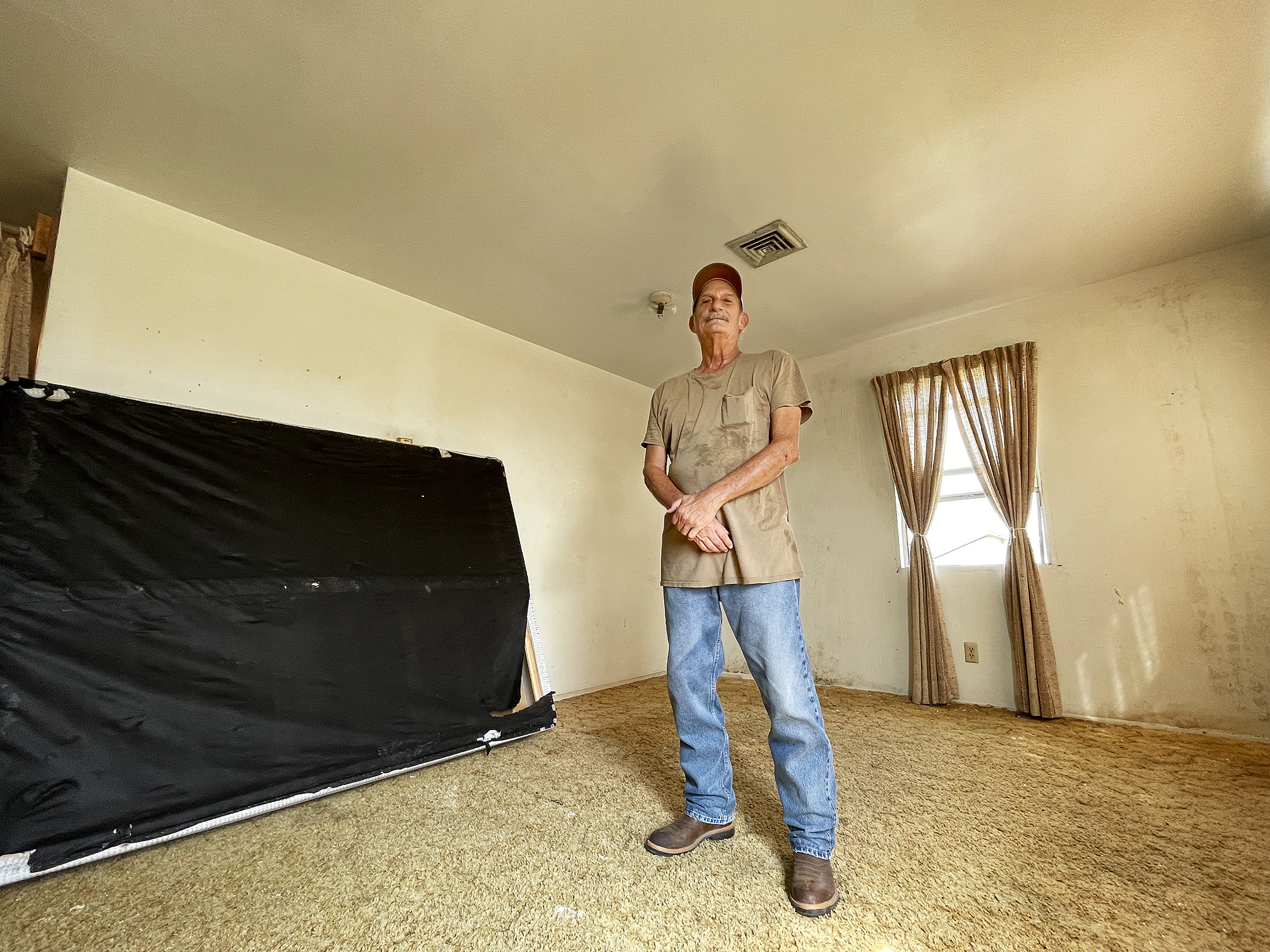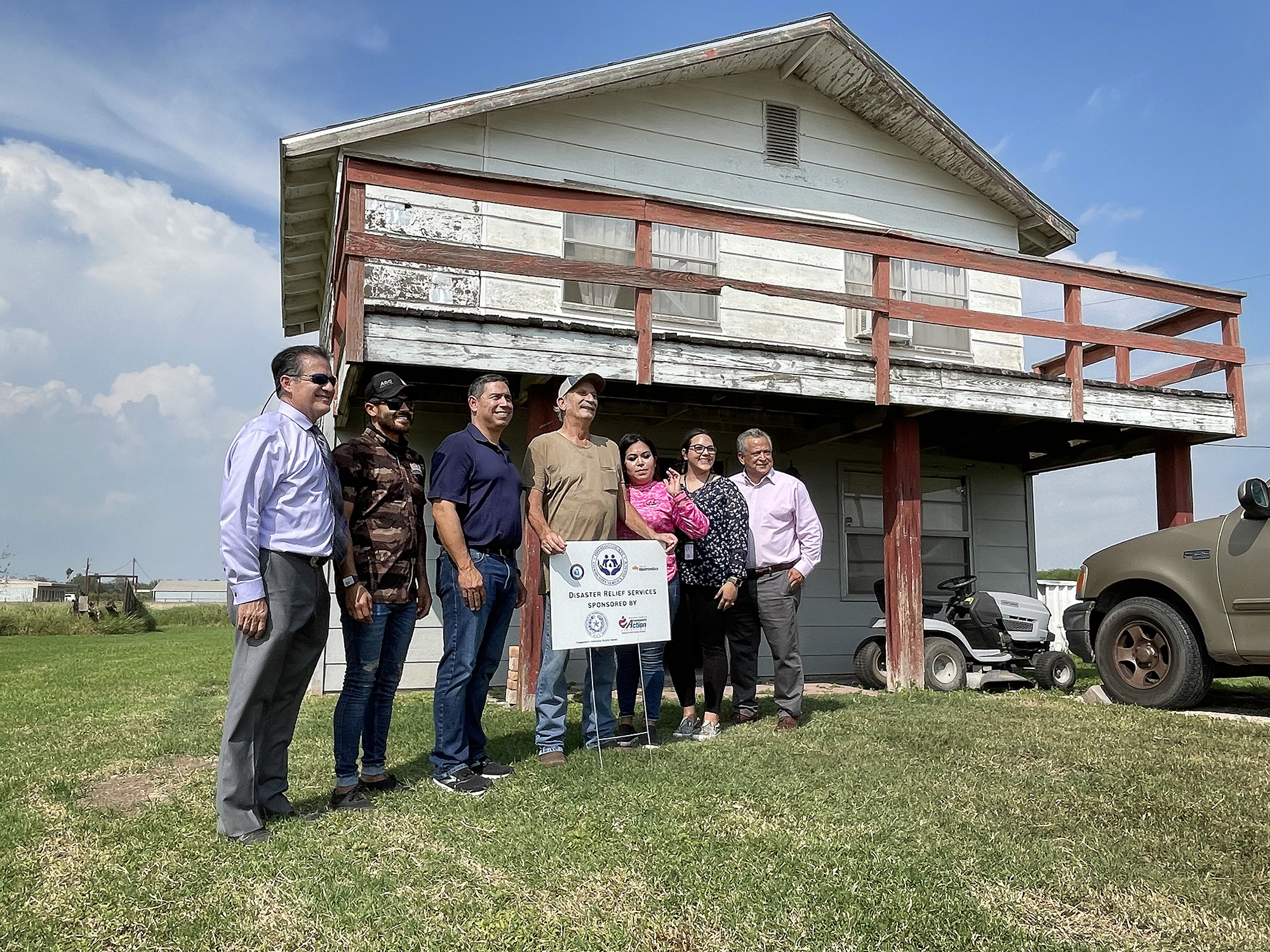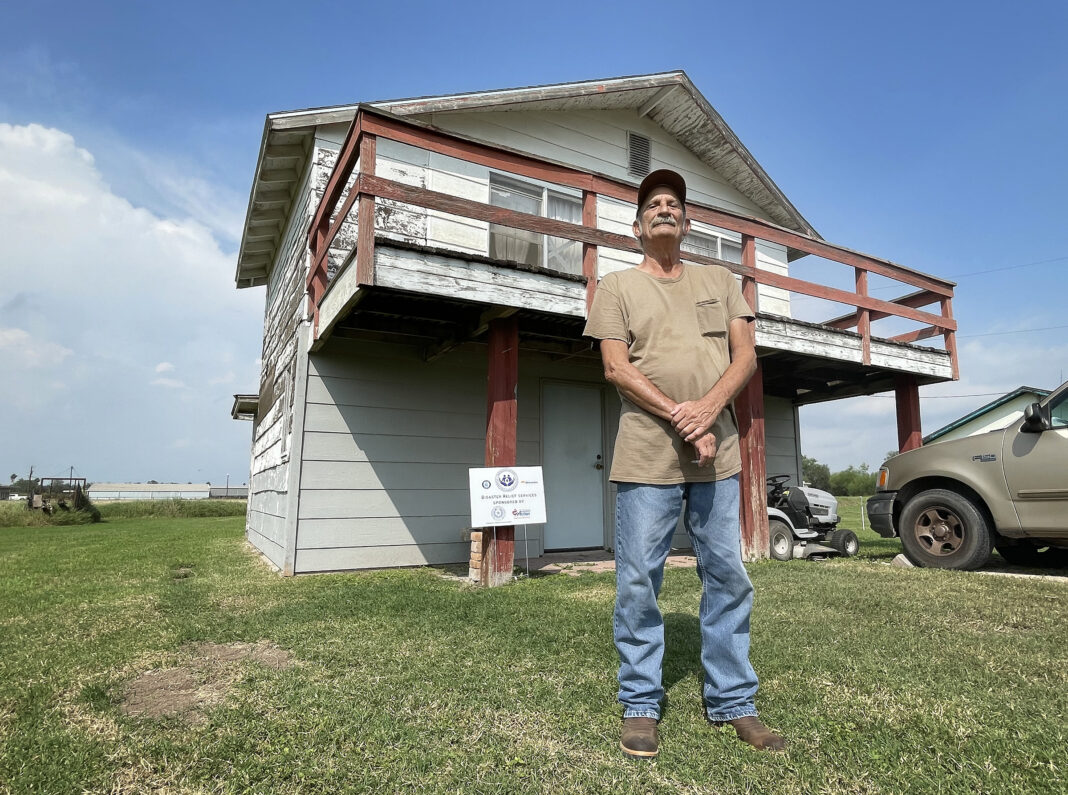MERCEDES — On the night of June 24, 2019, Richard Terry had been asleep in the two-story wood frame house he has called home since 1978 when a tempest struck, causing portions of the roof to cave into the living space below.
A huge chunk of soggy ceiling had landed atop the bed in the room next to his, and water continued to cascade down by the time he awoke the following morning and discovered the damage.
“You know, I was asleep. The next morning, I woke up — dripping and dripping,” Terry recalled as he stood in that bedroom Thursday afternoon.
“This bed was there, the whole ceiling fell down on top of the bed,” he said, gesturing to a mattress that was propped against the wall in an otherwise bare room that remained bright with sunshine despite the curtains drawn over two large picture windows.
The tidy room, temporarily frozen in a state of rearrangement, looked a fair bit different than that June 2019 night when a “500-year storm” pummeled the Mid-Valley almost a year to the day after another “historic” storm had wrought equal devastation.
The 2019 storm had been so powerful it garnered an official name from the National Weather Service: the Great June Flood, The Sequel.
Located along Mile 6 North Road in rural Mercedes, Terry’s home sits in the middle of a wide, well-kept yard and is surrounded by agricultural fields. In citrus orchards just down the road, orange trees show limbs bright with green wood scars where they have recently been trimmed — most likely to mitigate damage from another weather catastrophe, the February freeze.
The holes in Terry’s roof were around during February’s winter storm. They were there during 2020’s Hurricane Hanna.
They were there for two years before the soft-spoken man was able to find help via the Hidalgo County Community Service Agency (CSA).
And Terry is not alone. During a recent outreach event held at the Mercedes Safe Dome, the CSA was able to identify some 40 families that were still struggling to repair damages wrought by the storm two summers ago, according to CSA Executive Director Jaime Longoria.

Many of those families were denied assistance by FEMA. Others, like Terry, didn’t have homeowner’s insurance to rely on to pay for the repairs.
The COVID-19 pandemic made things worse, hampering disaster response until recently, Longoria said.
“This was the first project, the first house, where we started lending a hand to the families that were affected by the storm,” Longoria said, in Spanish.
“This man lost part of the roof of his house, and for two years he has struggled with the rains, with rain coming inside the home, the walls. They’d get wet. He has been asking for whatever kind of help he could get,” he said, speaking of Terry.
Terry was one of the lucky ones — one of a few dozen residents who were able to apply for help during the application window. The repairs on those 40-odd homes are being funded thanks to a federal grant.
But the CSA wasn’t the first organization who had access to the funds, according to Hidalgo County Precinct 1 Commissioner David Fuentes.
“Other organizations passed up on the opportunity to take advantage of these funds where they could administer them and assist residents with trying to get their roofs (repaired),” Fuentes said.
Fuentes thanked Terry for opening up his home to serve as an example of how the CSA is trying to help residents.
“These roof repairs are critical for people being protected from the next type of event that comes. So, it’s really important that we help get this message out,” Fuentes said.

Though the application window for assistance with 2019 storm damage has now closed, both Fuentes and the CSA want Hidalgo County residents to know there are numerous other programs available to help those in need.
Those programs include rent and mortgage relief, utility assistance, veterans programs. Some of the programs are geared toward disaster relief, others for COVID-19 or other kinds of relief.
But time is running out. The county has just one more month to distribute millions in mortgage and rent relief.
Longoria said applicants for that relief have been scant, despite the CSA reaching out to residents via community organizations, churches and the media.
Fuentes, too, wants residents to reach out to CSA to see what help they qualify for.
“This was just one program. They have a multitude of programs and people, you know, whatever situation they’re facing, can always call up the CSA office, the Community Service Agency, and ask what kinds of programs (they have). Explain the situation they’re in and see what kind of programs are afforded to them,” Fuentes said.
For Terry, speaking about how the storm damaged his home was difficult, even two years later. He had been forced to live in just a single room of his home because of the damage.
But now, with his roof made whole again, he said he is excited to get his home back to normal.
“It feels a whole lot better. I can begin finishing doing other work I can be doing downstairs, on the walls,” he said.




